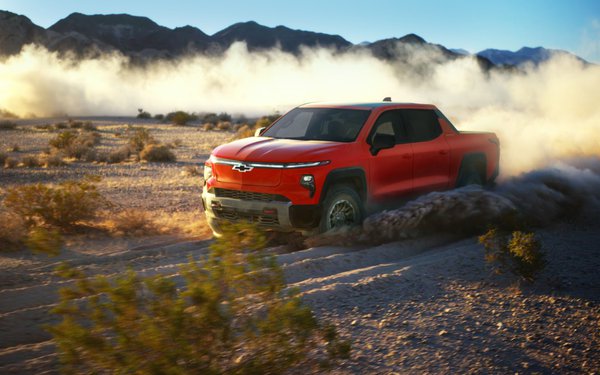
At this year’s ANA Masters of Marketing conference,
Norm de Greve didn’t show off a car. He showed off a Chevy Silverado ad — one made entirely by generative artificial intelligence, from insight to finished creative. Other companies are
already running such ads, of course, but GM’s presentation laid bare the complexity of the AI-driven transformation of marketing.
“It’s about
80% of the way there,” he said of the ad, noting that earlier efforts had reached only 40%. “It’s not ready for prime time yet, but we’re getting close.”
That unaired spot, built by GM’s proprietary AI engine, Metropolis, was one of several proof points de Greve shared to illustrate how the company turned a vastly
reduced marketing budget — down nearly $1 billion — into a reinvented system that uses AI to speed up and sharpen strategy, decisions, and creative output.
advertisement
advertisement
“When I joined, we had to drive more growth with less money,” he told the ANA audience. “So we rethought everything — media, creative, analytics, operations,
agencies, all of it.”
That rethink meant pulling key disciplines — brand strategy, social, and analytics — in-house after years of
outsourcing them to agency partners. The goal: free agencies to focus solely on breakthrough creative while cutting operational clutter. “When agencies stop being buried in our workflows, they
keep that outsider’s edge,” de Greve said. The result: GM quadrupled the amount of creative testing at the highest performance levels, while aligning messaging more closely with product
design.
At the core of that transformation is Metropolis, GM’s AI platform trained on the company’s brand and product DNA. It knows the difference
between a Silverado and a Sierra — between a Chevy’s rough-and-ready pragmatism and a GMC’s “rugged luxury.” The system can render on-brand, photorealistic assets in
minutes, eliminating reshoots and allowing GM to scale thousands of personalized images a month. For a snowy cabin scene, it can even predict which style of cabin suits each brand.
De Greve said Metropolis is now evolving into a fully agentic workflow, able to generate entire commercials from insights to finished film — the 80% ad being
the latest milestone. “AI didn’t replace creativity,” he said. “It expanded it. It made us faster, sharper and more imaginative than ever.”
The company is now producing thousands of hyper-personalized images each month, “all consistent, all on-brand, and all optimized in real time.” As a result,
“production costs are down, speed to market is up, and creative quality is still there,” de Greve said.
Still, he’s blunt about what AI
can’t yet do. “It doesn’t have breakthrough creativity,” he said. “Our agencies still do that.”
The transformation is
paying off. Consideration is up for every GM brand; Cadillac is now the fastest-growing luxury marquee in the U.S., and GMC is having its best year ever.
Earlier this month, GM shuffled its executive suite, moving de Greve to the newly created chief growth officer role, and elevating Lin-Hua Wu to CMO. De Greve now reports to Wu, who
had been chief communications officer.